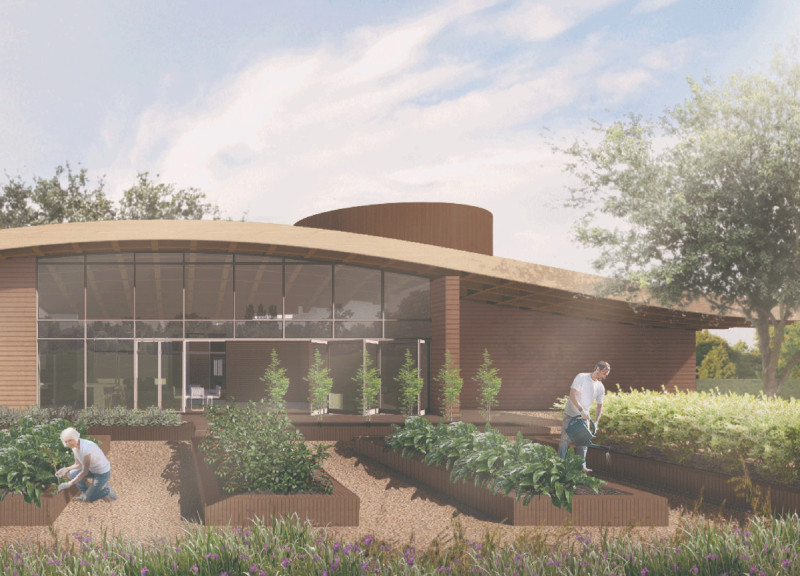5 key facts about this project
The hospice is designed to provide a peaceful environment for terminally ill patients and their families. Situated in a serene setting, the building encourages reflection and community interaction. The overall concept revolves around the journey of life, expressed through the elements of point, line, and plane. Each aspect of the design serves to support emotional connection and healing.
Conceptual Framework
The design begins with the idea of a point, representing both the beginning and end of life. This concept is brought to life through the arrangement of the building’s wings, each wing symbolizing a personal path for visitors. As individuals move through the space, they are invited to engage with one another, fostering connection and shared experiences. The pathways encourage exploration, leading visitors to various parts of the facility.
Spatial Arrangement
Movement and interaction are central to the layout. Notable spaces, such as the prayer room, offer moments of pause within the linear design. This circular room contrasts with the surrounding straight lines and serves as a place for introspection. The circular form signifies stability and continuity, providing a place where visitors can reflect in a calming setting.
Structural Considerations
A unifying plane envelopes the hospice, creating an integrated community space. The structural system is based on timber, specifically a waffle design that features gentle curves. This choice of material not only supports the building but also creates a warm, inviting atmosphere that aligns with the facility’s mission to provide care and comfort.
Integrative Landscapes
Gardens play a significant role in enhancing the hospice environment. Spaces like the meditation garden and healing garden offer quiet areas for visitors to connect with nature. Careful attention has been given to pathways, ensuring easy access from the street to these outdoor spaces. This design enhances the overall experience, allowing visitors to transition smoothly between indoor and outdoor areas.
The design emphasizes a blend of space, structure, and a thoughtful approach to life’s journey, creating an atmosphere that nurtures reflection and connection in a difficult time.



















































